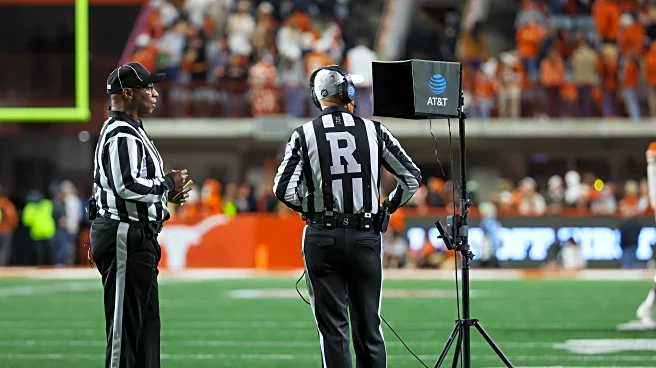
Every year one of the things we have to contend with is a slate of rule changes from the NCAA. Getting sensible on NIL? Forget it. Coming to a resolution on player stipends? Check back in 100 years. But by God we’re going to make sure every comma in the rule book is correct.
Here at STS we are a full service website. We want our readers to be fully informed about the rules so they can yell at the refs properly. Or everyone will ignore this and yell at the refs because it makes them feel better. Which
is fair if counterproductive. Before you make that decision, take a look at the proposed rule changes below.
Injury Timeout Rule Changes
Injuries being used to slow down the offense has become a fabric of the game. It’s hard to believe the HUNH offense has been popular for almost 20 years now, but the NCAA has finally decided it is time to take a look at players and coaches faking injuries to gain an advantage (Thanks Ole Miss!)
Starting this year, if a player goes down with an injury after, and that’s the key after, the ball has been spotted for the next play, that player’s team will be charged a time out. Worth noting this applies to both the offense and defense. If the injured player’s team does not have any timeouts remaining, there will be a 5 yard delay of game penalty assessed.
This seems to straddle the line between player safety and fake injuries. We all remember the .gifs of coaches waving a player to go down from the sideline, whatever the real reason. It isn’t a great look, and hopefully coaches will continue to emphasize the importance of a player staying down if actually injured to avoid issues where an injured player goes down after the ball is spotted.
Overtime Time Outs
For those of you that missed it, the UGA – GT game was a miserable OT experience. Every session of OT had multiple time outs and I’m pretty sure we spent more time in commercial break than playing football. Personally, I blame Kirby Smart for the nonsense. Because of his efforts, teams only get 1 timeout for the rest of the game at the start of the third overtime. No more waiting for the offense to come to the line to check the formation and call a TO.
Simulating Signals
The final major change this year comes with the wonderful “Disconcerting Signals” call. Defensive players can no longer use defensive calls that simulate the sound or cadence of offensive signals. The offense also can not use terms like “move” or “stem” that would typically be found on the defensive side of the ball. With some of the back and forth we’ve seen over the last few years on this for Clemson it will be interesting to see what, if any, effect it has.
Miscellaneous Changes
- Any player that makes a “T” signal during a kickoff-return will cause his team to forfeit the right to make a return and the play will be blown dead
- FCS gets the option to use coach-to-player communication sets
- No offensive player can be in the direct line of the snap to a potential kicker or within the frame of the snapper on punts. There’s more here involving players numbered on the LOS, what happens if the snapper is at the end of the line formation, etc. Essentially some rules intended to clamp down on shenanigans with respect to fakes and making football less fun.
- After a video review, officials will only say “upheld” or “overturned” when announcing the call. No more “confirmed” vs. “stands” decisions so we will never know if the call was upheld because of a lack of video evidence or not. All I have to say is “Cluck Cluck”

